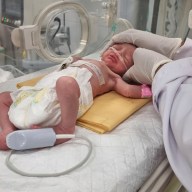Like the roof over your head, the state of your checking accountis something you may take for granted. But if you’re seeing money dripfrom your account in the form of fees, it’s time to stop those leaks before things get any more costly. “Even the smallest fee [can] burn through whatever you get from interest,” says Rob Rubin, a director at the banking analytics firm Novantas.
» MORE: NerdWallet’s best checking accounts
When you originally signed up for a checking account, you mayhave taken a quick glance at interest rates, fees, bank branch and ATM networks, and additional services like online and mobile banking. But now that you know what services you actually use and what fees you tend to pay,it’s time to evaluate whether you have the right account. Here are the questions to ask yourself:
1. Did I pay monthly fees thisyear?
Keeping money at your bank doesn’t have tocost you anything, butmonthly maintenance fees are all too common these days. Many banks have stopped offering free checking accounts to offset losses from fee incomecaused by new regulations in the wake of the 2008 financial crisis. Ifyou’re paying a monthly fee, ask if there’s a way to get it waived. Options may include setting up direct deposits, maintaininga minimum monthly balance or making a certain number — such as 10— of debit card transactions per month. If your bank doesn’t offer any way around the monthly fee, shop around for one that does. Alternatively, find a free checking account at an online-only bank, community bank or credit union. 2. Is mybank’s ATM network convenient?
Count how many times you needed cash recently, and how many of those times you had to pay an ATM fee. Thismay not be a pressing issue if youuse a credit or debit card everywhere. However, some small businesses, such as local bars and coffee shops, mayrequire cash as payment. That’s when having a bank with a free local network of ATMs pays off: You avoid any out-of-network or ATM operator fees. The biggest banks aren’t the only ones that make cash withdrawals convenient. Many credit unions and community banks take part in shared ATM networks such as Allpoint and the Co-Op network, which have tens of thousands of ATMs nationwide. Some financial institutions take it a step further.
“Small banks can compete [against nationalbanks] by refunding customers their ATM surcharges,” says David Albertazzi, senior analyst at the research and consulting firm Aite Group.
» MORE: Best banks for ATMs
3. Do I pay any overdraft fees?
Paying even one overdraft fee is expensive — the median cost is $34, according to the Consumer Finance Protection Bureau. Overdraft coverage gives your bank permission to pay any debit card purchases, ATM withdrawals or checks whenever your checking account lacks enough money. And once you’re in the red, any new purchases lead to more overdraft fees. To cut the cost of those fees, you can try an overdraft protection transfer service, which automatically transfers money from your savings account to complete a purchase, or opt out of overdraftcoverage. Take a hard look at your spending habits when deciding on your overdraft program or lack of one. These are meant to be used rarely.
» MORE: How to avoid overdraft fees
4. What services do I actually use?
Look at your bank statements for the past months to see what types of transactions you’ve made. Take note of whether you’ve had any wire transfers, cashier’s checks, money orders, ACH transfers or bill payments. Fees for these services vary by bank, so if you use them often, look at banks that have the lowest prices. 5. What am I missing out on?
First, see what your bank has. Many banks offer free online and mobile banking services, like remote check deposits and text alerts when your balance is below a certain amount. Explore your bank’s website to make sure you’re aware of all the benefits that come with your account. Next, see what your bank doesn’t have.The interest rate on your checking account may be next to nothing, but it doesn’t have to be. Many online banks raise the barwith1% annual percentage yield accounts. Outside of interest, some accounts have rewards. If you’re already thinking of switching banks, there may be opportunities there, too.Promotionsfor opening a checking account exist, althoughthey should be the icing on the cake. Your needs, which may range from real-timecustomer service to mobile app functionality, should come first. » MORE: How to switch banks
“Ultimately, it’s about feeling confident about where my money is, where my money is going and knowing that I’m on the right track,” says Mark Schwanhausser, a director at Javelin Strategy & Research. Once your money’s in good order, maybe it’s time to check on your roof.
Spencer Tierney is a staff writer at NerdWallet, a personal finance website. Email: spencer@nerdwallet.com. Twitter: @SpencerNerd. The article 5 Ways to Tell If Your Checking Account’s the Right Fit originally appeared on NerdWallet.
















